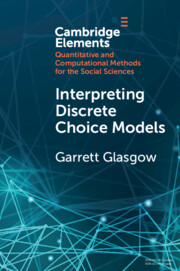In recent decades, political science literature has experienced significant growth in the popularity of nonlinear models with multiplicative interaction terms. When one or more constitutive variables are not binary, most studies report the marginal effect of the variable of interest at its sample mean while allowing the other constitutive variable/s to vary along its range and holding all other covariates constant at their means, modes, or medians. In this article, we argue that this conventional approach is not always the most suitable since the marginal effect of a variable at its sample mean might not be sufficiently representative of its prevalent effect at a specific value of the conditioning variable and might produce excessively model-dependent predictions. We propose two procedures to help researchers gain a better understanding of how the typical effect of the variable of interest varies as a function of the conditioning variable: (1) computing and plotting the marginal effects at all in-sample combinations of the values of the constitutive variables and (2) computing and plotting what we call the “Distribution-Weighted Average Marginal Effect” over the values of the conditioning variable.


